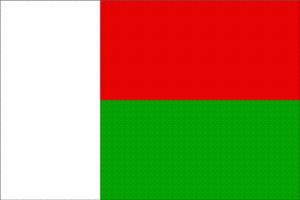Language/Plateau-malagasy/Vocabulary/Numbers-and-Counting
Plateau Malagasy Numbers and Counting
Learning the basics of Plateau Malagasy numbers and counting is an essential step towards fluency in the language. Plateau Malagasy, like many other languages, has its system of numbers and counting, making it important to understand how it works to communicate effectively with native Plateau Malagasy speakers. In this lesson, you will learn how to count and use numbers in Plateau Malagasy, including cardinal numbers, ordinal numbers, and basic math expressions. So let's get started!
Cardinal Numbers
Cardinal numbers are the most basic form of numbers in Plateau Malagasy. They are used for counting or identifying a specific quantity. It is important to note, however, that cardinal numbers in Plateau Malagasy are gender-specific. That means that the number forms vary depending on the gender of the noun they describe. There are two genders in Plateau Malagasy: masculine and feminine. In general, masculine numbers end in '-an' while feminine numbers end in '-y'.
Here is a table of the first ten cardinal numbers in Plateau Malagasy:
| Plateau Malagasy | Pronunciation | English |
|---|---|---|
| iray (masculine) | ee-rah-y | one (masculine) |
| isa (feminine) | ee-sah | one (feminine) |
| roa (masculine) | roo-ah | two (masculine) |
| roanjato (feminine) | roo-ahn-jah-too | two (feminine) |
| telo (masculine) | teh-loo | three (masculine) |
| teloandro (feminine) | teh-loo-ahn-droo | three (feminine) |
| efatra (masculine) | ay-fa-tr | four (masculine) |
| efaandro (feminine) | ay-fah-ahn-droo | four (feminine) |
| dimy (masculine) | dee-mee | five (masculine) |
| dimyandro (feminine) | dee-mee-ahn-droo | five (feminine) |
The numbers six through ten follow a similar pattern, with the masculine numbers ending in '-dimy' and the feminine numbers ending in '-dimy sy'.
Here are some examples:
- Enina (masculine) sy folo (feminine) - six
- Fitondrantena (masculine) sy maro (feminine) - ten
Ordinal Numbers
Ordinal numbers indicate the order or position of something in sequence. For example, first, second, third, etc. In Plateau Malagasy, ordinal numbers are formed by adding the suffix -a to the cardinal numbers that end in a consonant and -la to the ones that end in a vowel.
Here is a table of the first five ordinal numbers in Plateau Malagasy:
| Plateau Malagasy | Pronunciation | English |
|---|---|---|
| voalohany | voo-ah-loo-han-ee | first (masculine) |
| faharoa | fah-hah-roo-ah | second (masculine) |
| fahatelo | fah-hah-teh-loo | third (masculine) |
| fahefatra | fah-hay-fah-tr | fourth (masculine) |
| fahadimy | fah-hah-dee-mee | fifth (masculine) |
The ordinal numbers in Plateau Malagasy agree in gender with the noun they modify. Here are some examples:
- "Nandalo ny zanako nivritsikavoalohany." - "My youngest child graduated first."
- "Nanomboka ny rahampitso voalohany." - "The first semester has started."
Basic Math Expressions
In Plateau Malagasy, you can use the following basic math expressions:
- Amin'ny laharana iray: plus or addition
- Amin'ny laharana roa: minus or subtraction
- Amin'ny laharana telo: multiplied by
- Amin'ny laharana efatra: divided by (Note that the word "hafatra" is also used for dividing in Malagasy.)
- Ny ankamaroan'ny: equals
Here are some examples:
- "Enina (masculine) plus fitondrantena (masculine) dia folo (feminine)" - "Six plus ten equals sixteen."
- "Fitondrantena (masculine) minus fitondrantena (masculine) dia aro (feminine)" - "Ten minus ten equals zero."
- "Roapolo (masculine) multiplied by telo (masculine) dia telo-andro sy roa-tsydy (feminine)" - "Twenty-three multiplied by three is seventy-one."
- "Efaandro (feminine) divided by isa (feminine) dia roa-anarana (feminine)" - "Four divided by one equals four."
Cultural Information and interesting facts
Malagasy people have different ways to count besides the standard way. For example, some people use body parts to count, called "finger counting" or "toe counting". The number of each finger and toe has its unique name in Plateau Malagasy.
In Plateau Malagasy, "telolahy" is a term that refers to the practice of dividing by number - for example, splitting food or objects - equally among the group members. This is a widespread cultural norm within Plateau Malagasy society, and is usually used to maintain fairness and equity within the group.
The Plateau Malagasy calendar begins in April, and the months' names are based on the seasons and events happening during that time of year. For instance, "Janoary" and "Febroary" come from the French language and were introduced by the French colonizers, while "Martsa" refers to the beginning of the rainy season.
Plateau Malagasy people use specific words to refer to different points in time. For example, "fanjakana" means "age," while "kaomaty" means "the present moment" and "andsapony" means "the past."

